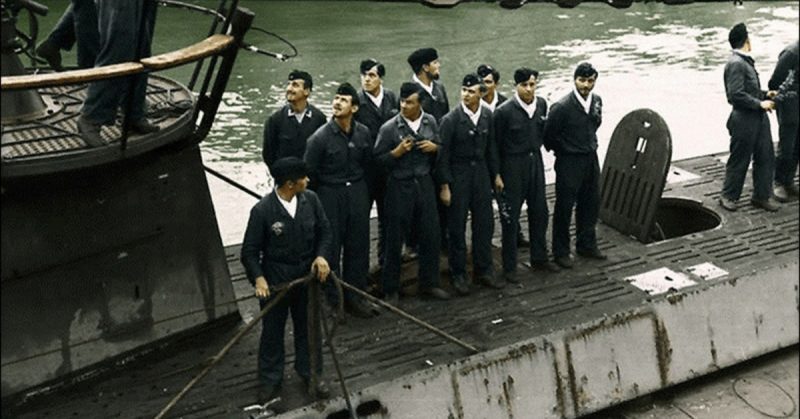“We all wanted the boat to be successful and to sink as much as possible, regardless of our losses,”
The myth of U-96 lives on to this day. Only a single living witness knows the truth of what happened, such was the danger of life on a Nazi submarine during the Second World War. At 103 years old, Friedrich Grade is the last living survivor of the crew of this legendary submarine.
His experience would have been useful material for the traveling war correspondent Lothar-Günther Buchheim’s novel Das Boot that was published in 1973 and which inspired Wolfgang Petersen’s feature film bearing the same name in 1981.
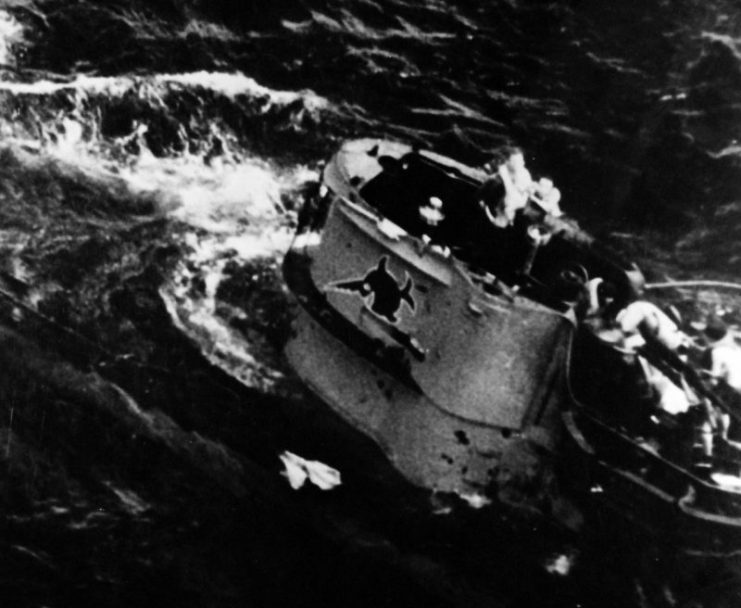
Caption: Air Attacks on German U-boats, WWII. Crew of German U-boat, U-664, prepare to go over side of ship during attack by two Avenger aircraft from USS Card (CVE-11), August 9, 1943. Note, the laughing sawfish insignia on the conning tower of the 9th U-boat Flotilla. Incident #3992. Official U.S. Navy Photograph, now in the collections of the National Archives. (2015/8/18
Grade was offered a role in the making of the movie, but instead, he chose to stay on the sidelines. His valuable knowledge, and, more importantly, his journal, would remain a secret for many more years.
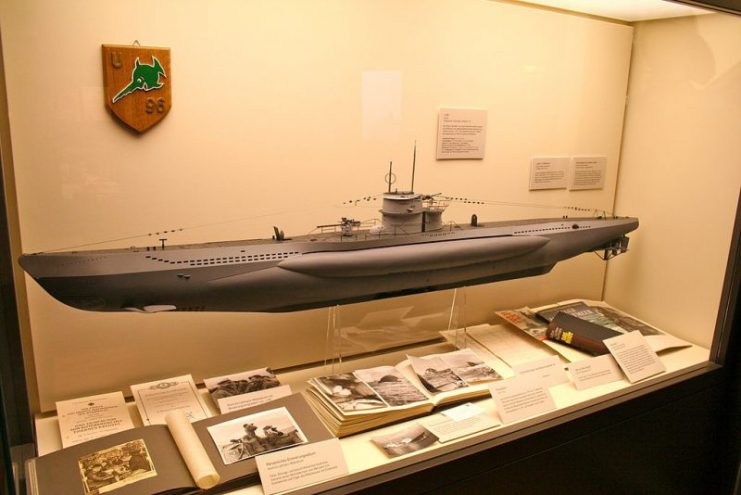
Initial successes of the German U-boat fleet
In the early years of WW2, the success of German U-boats was initially very impressive.
One example is that of U-47, under the command of Günther Prien. The sub stealthily penetrated the British naval base at Scapa Flow during the night of October 13/14, 1939. It launched a torpedo, sinking the British battleship Royal Oak, then left the port unmolested.
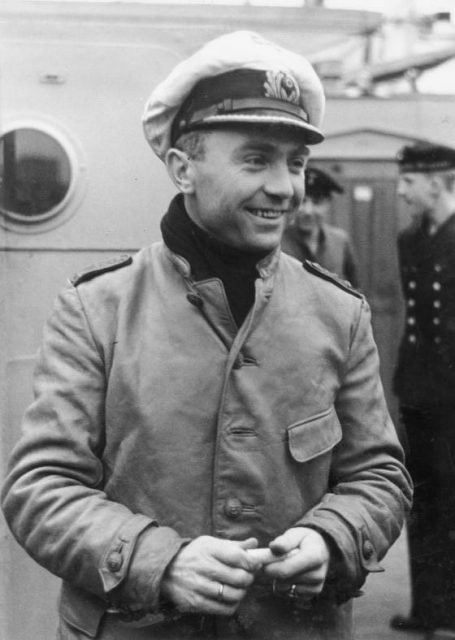
HMS Royal Oak floundered, and 833 crew members perished. Prien and his crew were celebrated as heroes by Nazi propaganda. Prien even spoke at the Berlin Sports Palace and was photographed with Adolf Hitler. Magazines printed stories with the families of the German submarine commanders.
Actually, the Kriegsmarine (German Navy) had very little to oppose the formidable Royal Navy, but their U-boats were enormously successful.
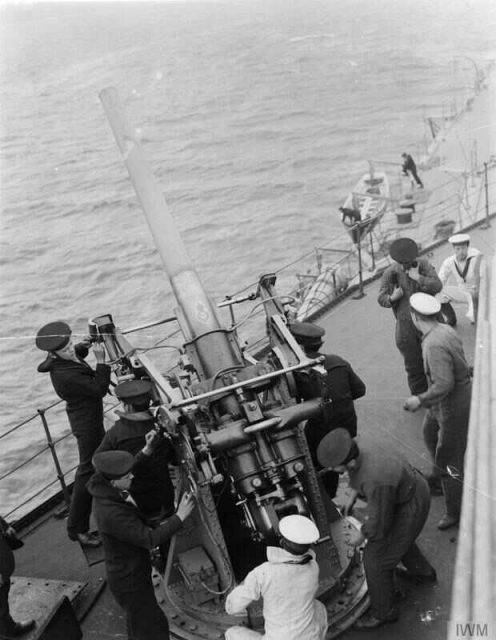
Massive submarine bunkers popped up all along the Norwegian and French coasts. In a short time, the submarine fleet had sunk Allied merchant ships amounting to 4.5 million gross registered tons. Great Britain’s supply of military equipment and raw materials was at the mercy of these Nazi Wolf Packs.

U-96
U-96 entered service in September 1940. In December of that same year, Friedrich Grade joined the crew as Chief Engineer. The famed U-Boat departed on 11 missions, sinking at least 28 ships and causing about 1,300 fatalities until early 1943.
“An indescribably beautiful feeling, from a distance three torpedoes = three hits,” Grade noted on April 28, 1941, in his diary.
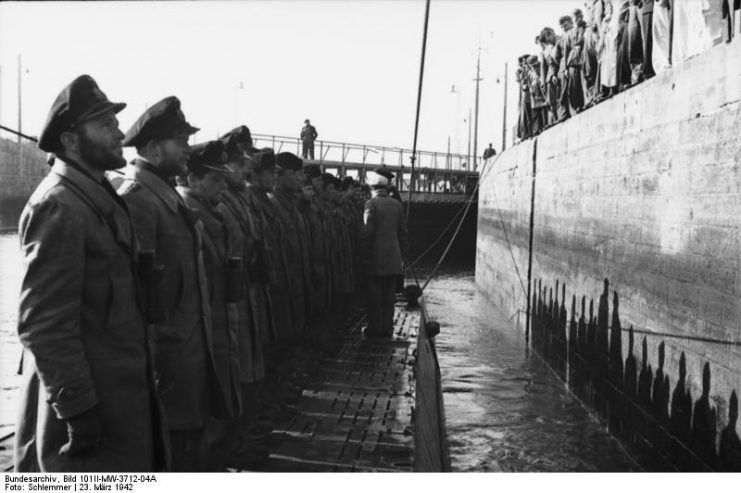
If these words had been discovered, it would have been the end for Grade for breach of secrecy. However, not even Grade’s wife knew about his journal. It remained hidden in the attic for 75 years, collecting dust.
That day, U-96 sank two tankers and a steamer, causing 60 fatalities. “We all wanted the boat to be successful and to sink as much as possible, regardless of our losses,” said Grade in a TV interview. Nevertheless, he emphasized: “We were not animated by heroism or any other strange thoughts.”
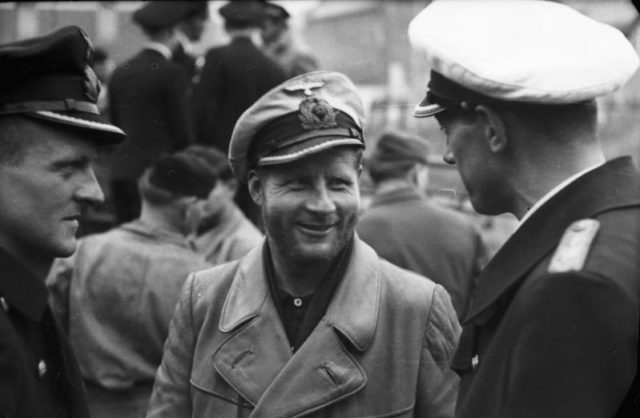
Grade also explained in his journal what it was like to live on U-96 where there were 45 men crowded into confined spaces and the hygienic conditions were catastrophic. “The air stinks of diesel and is alternately hot, cold and damp. Clothes are almost always stuck to the body.”
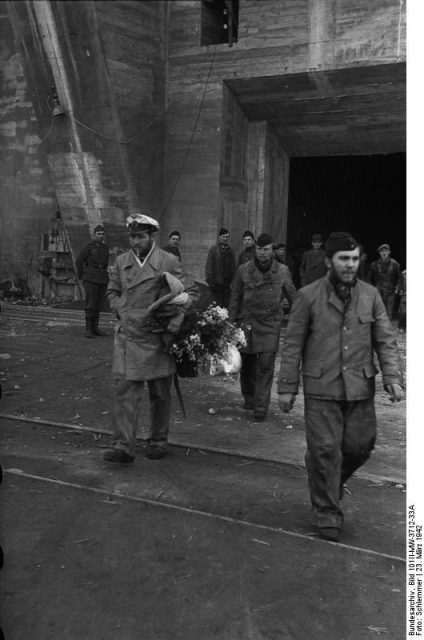
So, how real is the cinematic depiction portrayed in the movie Das Boot?
Klaus Wennemann acts as the nameless chief engineer (“LI” for short) in Wolfgang Petersen’s movie. It was Wennemann’s breakthrough role as an actor. Grade thought that the resemblance with himself was excellent.
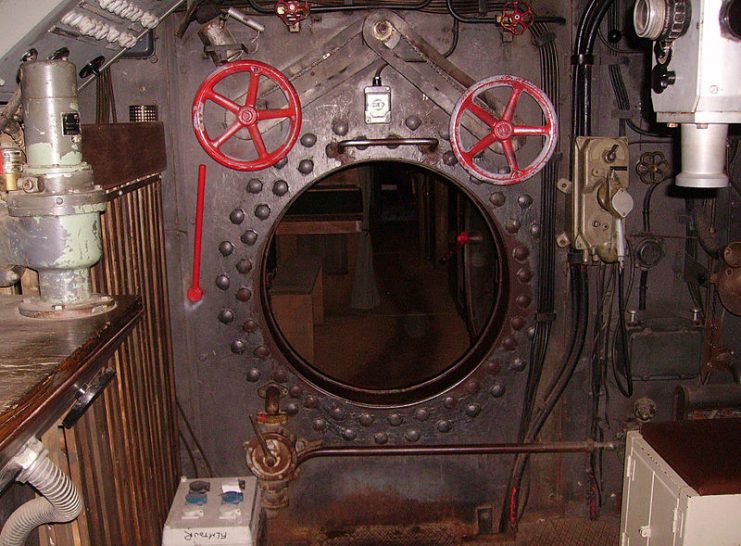
Only the vulgar tone between the protagonists as portrayed by the author Buchheim, who passed away in 2007, bothered Grade. He never liked the man, who joined the crew of U-96 in the autumn of 1941 to take photographs of the U-boat in action.

The movie does an outstanding job of showing the grubbiness of the men’s attire and appearance. Seeing Jürgen Prochnow, the German actor playing the submarine commandant, with his greasy dark beard and dirty shirt is an excellent portrayal of what the crew might have looked like.
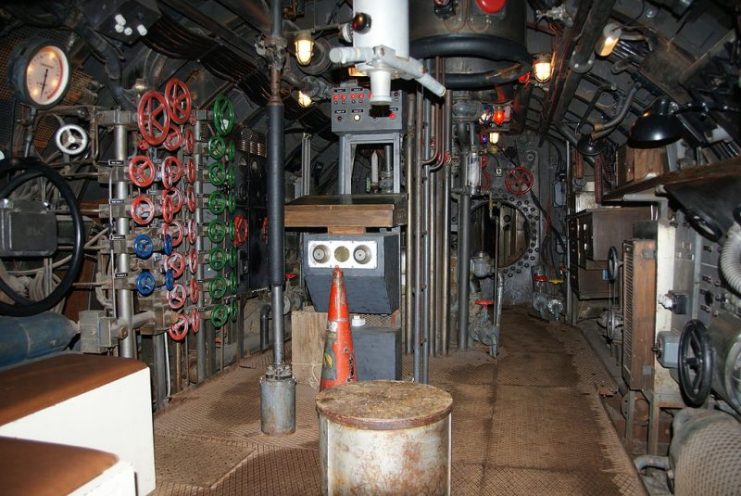
Having said that, the film mainly focuses on scenes that involve action. Like, for example, the torpedoing of a merchant ship and the ensuing flight from the escort destroyer. It is a scene that lasts for many minutes and illustrates the sheer fright of the crew suffering under a heavy barrage of depth charges.
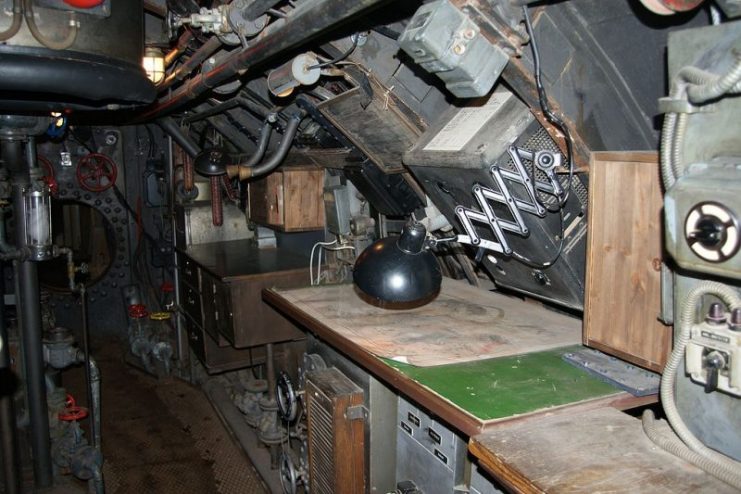
The audience cannot help but empathize with the crew of U-96 when the submarine shudders at every explosion. The destroyer is relentless. It never stops its search, harassing the Germans that are the heroes of the film in this particular moment.
Then comes the silence when the explosions stop. Water is leaking from up above, the sonar pings that had harassed the submarine are no more. The men of U-96 wait and wait until they finally surface, revealing an empty sea. They have survived.
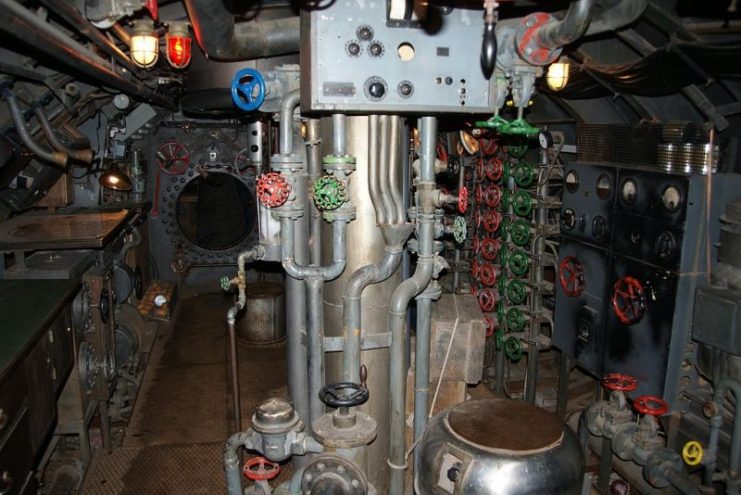
But life on a German U-boat during the Second World War was not all about the relentless pursuit of enemy destroyers.

For the most part, the crew pursued a life of extreme monotony consisting of equipment maintenance, checking the torpedo weaponry, general upkeep activities, and other essential functions that maintained discipline and kept the men alive for as long as possible.

In the end, Das Boot was nominated for six Academy Awards with the director, Wolfgang Petersen, winning the accolade as Best Director and Best Adapted Screenplay. The movie was an excellent effort, to say the least.
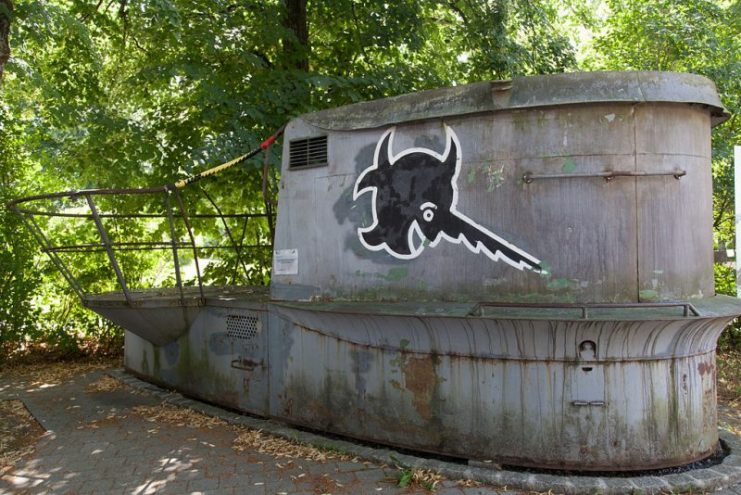
Read another story from us: The Hidden Dangers of Serving on a German U-boat During WW2
And the legacy of Das Boot lives on
A new German TV series produced for Sky Atlantic which is based on the book and the movie was released in November 2018.
Even though the series portrays the heroes of U-96 as more refined and cleaner, it is still an entertaining take on this famous story. Besides, it would be almost impossible to recreate Wolfgang Petersen’s unnerving and grimy ambiance.
